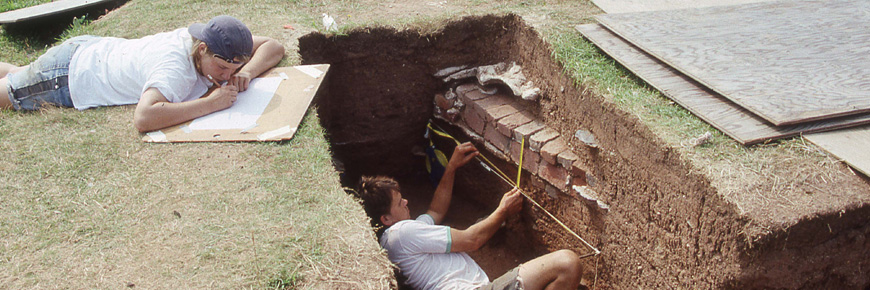
Archaeological excavation at Fort Charles
Archaeology
Fort Anne National Historic Site
Excavations
Archaeological excavations during the summers of 1989 to 1992 unearthed artefacts likely associated with the early Scottish settlement at Charles Fort including a royal bale seal and Rhenish stoneware sherds.
Artifacts
Royal bale seal with crown and thistle motif

The lead seal is of interest because the crown and thistle Royal Arms of King James I, or of his son and heir, King Charles I, marks one side of the seal, while the other side bears the impression of the Arms of the port of Bristol.
These stamped impressions are significant for they are datable.
The crown and thistle motif indicates that the seal dates to c.1600s-40s, during the reigns of James I and Charles I. It is not possible, at present, to determine whether the crown and thistle stamp relates to James I or Charles I, as both kings used the same motif.
The presence of the Bristol arms on the other side of the seal is not in conflict with this date for English legislation had been in place since about 1483-4 requiring the arms of the county or city to be on one side of the seal, with the royal arms on the other side.
Lead seals were used throughout much of Europe from the late 1300s to the early 1800s as a way of regulating the production of cloth and assuring quality control. A seal would be attached to cloth to indicate that it had been inspected and, in the case of England, that appropriate taxes had been paid to the Crown.1
Rhenish stoneware sherds

Related links
- Date modified :